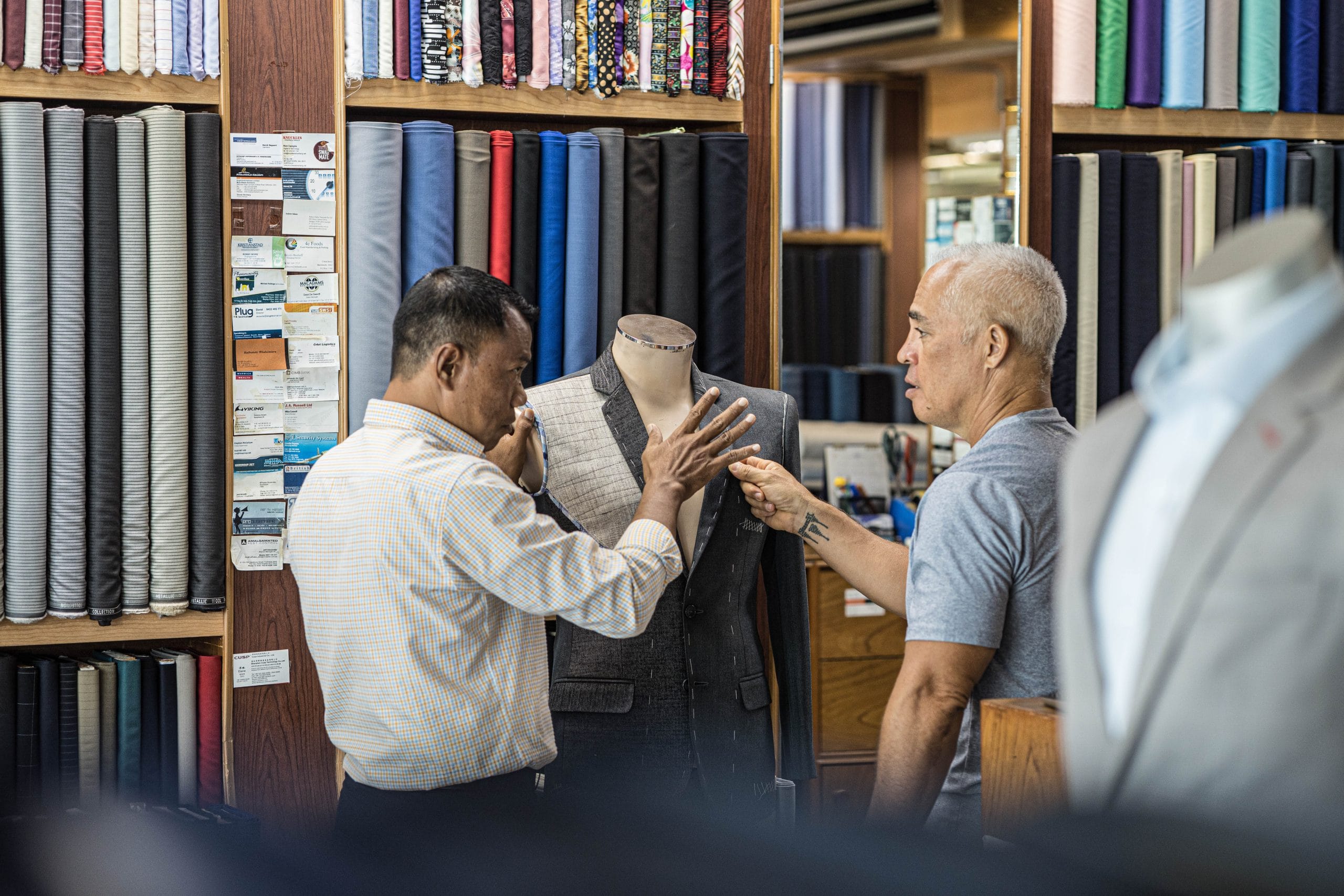On suit labels, the super numbers—namely, the Super 120s, Super 130s, and Super 150s—are often used.
These statistics often determine a suit’s pricing and are said to indicate the fabric’s overall quality (the more the super number, the higher the price)
To quantify precisely how thin the individual wool fibers utilized in the cloth are, the super number, which is related to the width of the wool yarn in microns, is employed.
The wool obtained from a sheep is examined using a microscope to determine its fineness. The wool is graded according to a numerical method and measured in microns.
Additionally, the quantity of distinct yarns in a single weave will be shown by this number. About 30 years ago, the word “super” was first used as a shorthand measurement.
They eventually turned to be linked with excellent fabrics, and presently they signify the caliber and grade of some of the best textiles produced.
The cost of each fabric can increase dramatically as the thread count increases, especially when these fine wools are combined with pricey fibers like mohair, cashmere, and alpaca.
Thread counts of Super 100 or more are considered to be “fine grade wool,” and they indicate a fabric’s quality.
Merino wool, one of the highest grade wools available right now, is likely to be used to create suits with wool counts ranging from super 120 to super 200.
Merino wools perform noticeably better than other varieties of wool and are wonderfully comfortable.
Super 110s – Super 120s
When seeking for a high-quality suit that will be comfortable and durable to wear frequently, suits manufactured of Super 100’s, 110’s, and 120’s wool frequently perform best.
These materials are perfect for those with a decent frame who desire a finer-fabric suit to emphasize their body shape.
Considering raw long-staple fibers in this range of width are widely available, the majority of mills can produce this grade of fabric well.
As a result, the tighter the fibers can be twisted, the more sturdy and wrinkle-resistant the material will be.
Super 130s – Super 150s
The margin of the common stock is represented by this assortment of fibers. This category includes around 30% of farmed wool, making it reasonably accessible while having a noteworthy richness and softness when compared to the Super 110s-Super 120s range.
A Super 150s will function as a power suit used one to three times a month, even if it may be too delicate for weekly wear.
For those who don’t wear their suits as frequently, reside in warmer locations, or plan to use them in the summer, suits made of Super 130 and 140 are the ideal option.
Certain fabrics are ideal for clients that choose comfort above toughness and warmth.
Super 180s+
Super 180s and greater wool outputs make only just 3% of total yields. The rarity and cost of these fibers are quite high.
These textiles should only be used cautiously for suits. Regardless of how precisely the tailoring is done, suits made from high-super-number materials gradually lose their form even if they appear fantastic when they are newly pressed.
After a long day, the fabric’s softness and drape tend to wear down and bag.They are often created for special events or situations when the suit will only be worn periodically because of this.
Contact us for any kind of questions or just drop by our tailor shop in Patong, Otop.



